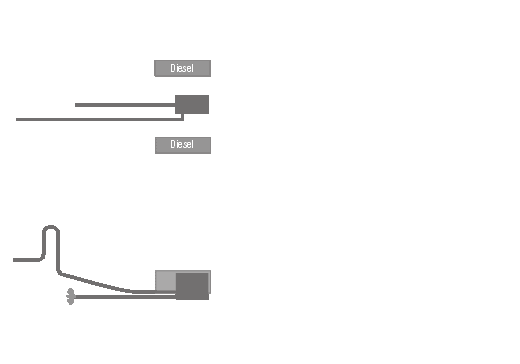
A Beta Marine BV2203 will be located below the pilothouse floor, allowing 360 degree service access. Flanking the engine will be two 83 gallon diesel tanks. An Aquadrive CV joint will drive the Aquamet shaft and a 3 blade Maxprop. The engine compartment will be lined with acoustic foam and protected by a Fireboy fire protection system.
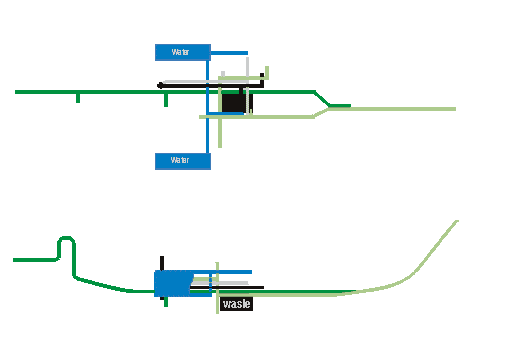
A single 2" inlet connected to a distribution manifold will feed all the seawater needs of the ship. A single standpipe will exhaust the black and gray water. Separate bilge and engine cooling exhausts will be located above the waterline on the transom. The bilge system will consist of a manual Edson Bone Dry 40 GPM in the cockpit; a Par 36600 on air pressure switches located in keel sump, with a second, higher up, wired to an alarm; and a shaft-driven damage control pump. Two 105 gallon freshwater tanks will be located below the pilothouse floor and a 40 gallon holding tank will reside in the bilge. The hydronic heating system will supply hot water. The combination of a raised pilothouse floor and centrally located galley and head allow very short and easily accessible plumbing runs.
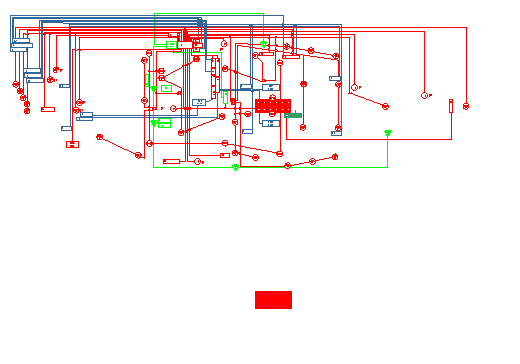
The heart of the system is six L16's located in a vented locker in the bilge. They will be charged by a high-output engine-driven alternator and four Simens SM-46 solar panels mounted on the stern pulpit. The main loads will be a 12v refrigeration system, windlass and the 120V loads from a 2000 watt Prosine inverter. As Galene has internal ballast, the mast, stays and shrouds will be grounded to an external copper plate for lighting protection.

A Lighthouse 1501 windlass will control twin anchors on the bow roller, the primary being a 66 lb. Spade on an all chain rode, the secondary being a 44 lb. Bruce on a nylon/chain rode. In the stern lazarette a 32 lb. Fortress will be rigged and ready to go on a nylon rode, and I'm designing a place into the bildge to store a 70 lb. Luke.
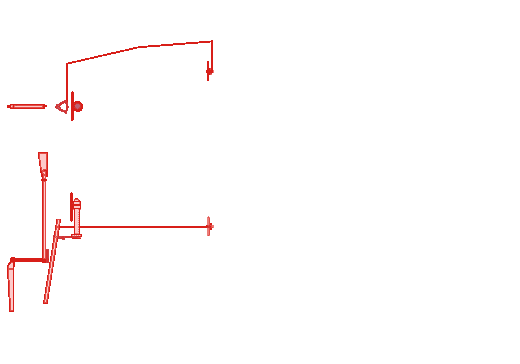
Edson CD-i rack geared steering in the cockpit, pull-pull steering from the inside steering station, and a Cape Horn windvane on the transom (partnered with a tiller pilot located in the lazarette).
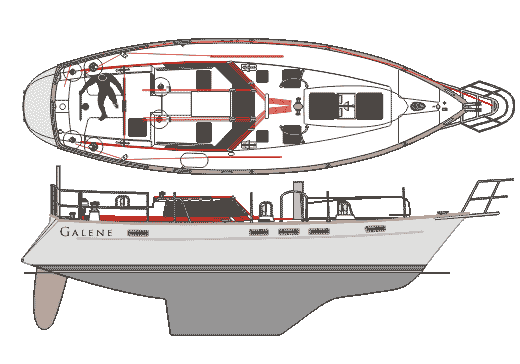
The cockpit is kept small with a bridgedeck segregating the compionway. A life raft will be located below the helmsman's seat. Headsail halyards terminate at the mast, while the main halyard and reefing lines run to the cockpit. Nine Bomar cast hatches and seven cowl vents bring light and air below. The large flush deck offers good storage for the rigid dingy. Two twenty pound propane tanks will be stored in a dedicated locker on the starboard deck. Two large deck lockers at the bow will serve as the ships garage. Cleats and stanchions will be located atop the caprail to keep the"toe stubbers" to a minimum. Jacklines will run the length of the boat port and starboard.
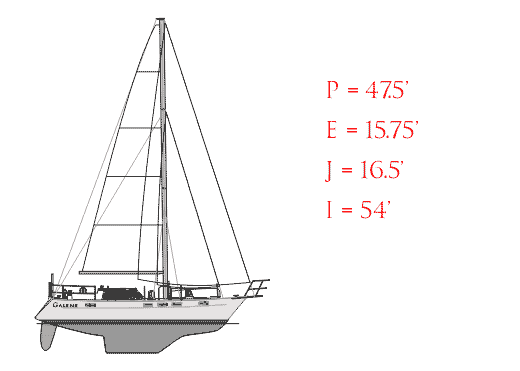
Galene will be a double headstay sloop rig. She is designed for singlehanded sail handling and will be fitted with a fully battened main, slab reefing, and a Dutchman flaking system. Both the headsail and staysail may be mounted on Profurl furling units, although I'm still wavering about a detachable staysail stay and hanked-on working jibs.
Ideally the sequence will be as follows: For light-air windward work, and off the wind, the big no.1 on the headstay will be the workhorse. As the boat approaches the high teens the no.1 will come in and the staysail will be unrolled. As the wind carries into the mid 20s the main will receive its first tuck. A second reef should get me well up into the 30s, without having to have yet gone on deck to change sails. Approaching 40 knots, dedicated storm canvas will come into play.
 |
|||
 |
|||
 |
|||
 |
|||
 |
|||
 |
 |
||
 |
|||
 |
|||